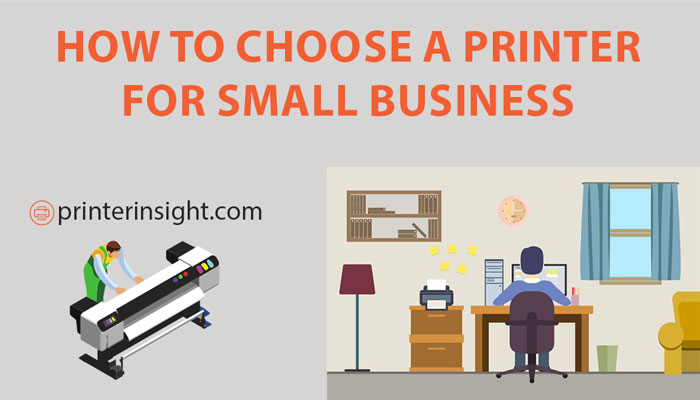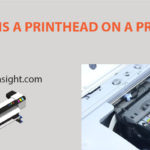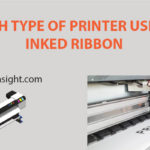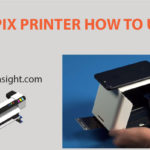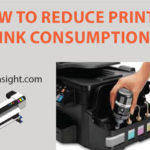Trying to purchase a printer for your small business but can decide which one to buy?
Well, you are in the right place. As a printer enthusiast and small business owner, I have had my fair share of experience with different types and models of printers. Moreover, I love to share my insights.
So, In this article, I am going to provide an in-depth buying guide on how to choose a printer for small business along with some necessary FAQs.
This Comprehensive Buying Guide is based on my years of usage and experience. As a result, I bet you won’t be disappointed if you stick here till the end.
However, before choosing the perfect printer for yourself, you need to understand different types of printers so that you can choose according to your need.
What Are The 3 Types Of Printers?
There are different kinds of printers available in the market. But for small business and personal use the below 3 kinds of printers are most used.
1. Inkjet Printers
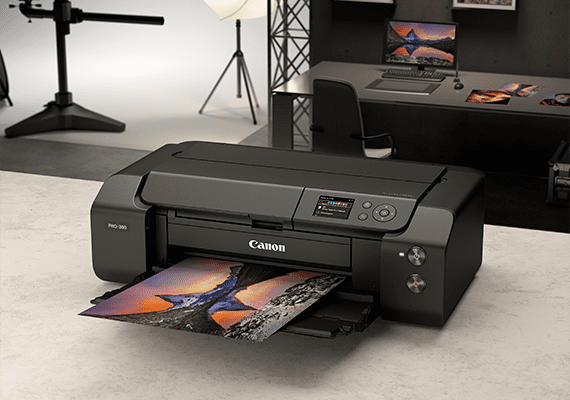
Inkjet printers are a type of computer printer that creates images by spraying tiny droplets of ink onto paper. They are the most common type of printer used today and can be found in homes, businesses, and schools. For printing inkjet printers use ink cartridges.
Inkjet printers are available in two types
- Consumer: Consumer inkjet printers are designed for personal use. They are typically smaller and less expensive.
- Business: Business inkjet printers are designed for use in a business setting. They can be a bit expensive and larger in size.
Inkjet printers work by heating up a small amount of ink and then spitting it out of the print head in tiny droplets. There is a small device called printhead inside inkjet printers. It sits at the bottom of the printer and contains the nozzles from which the ink is sprayed. The heated ink is sprayed onto a piece of paper, where it is absorbed and forms an image.
Inkjet printers are available in both black-and-white and color
Now let’s have a look at some advantages and disadvantages of Inkjet printers.
Advantages
- Inkjet printers are relatively affordable, especially when compared to laser printers.
- They are also very easy to use, and even novice computer users can get the hang of using an inkjet printer in a matter of minutes.
- Inkjet printers are also very versatile and can be used for a wide range of tasks, from printing documents and photos to creating labels and stickers.
- They are also relatively small and compact, so they can be easily stored away when not in use.
Disadvantages
- One disadvantage of inkjet printers is that they can be slow.
- Another is that they can be messy, as the ink can often smudge or spill.
- Inkjet printers can be expensive to operate, as the ink cartridges often cost more than the printer itself.
2. Laser Printers
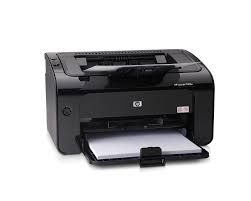
Laser printers are a type of digital printer that uses a laser beam to produce an image on a photosensitive drum. The drum is then electrostatically charged and the toner is attracted to the image, where it is fused to the drum by heat, and the image is then transferred to the paper.
To know more about how laser printers work check out our article on how a laser printer works.
Laser printers are more expensive than inkjet printers, but they produce higher-quality prints.
Laser printers have come to be the dominant type of printer in both the personal and business world for a number of reasons. The technology has improved and become more affordable with each successive generation, and the printers are more reliable than ever before.
Now let’s look at some advantages and disadvantages of Laser printers.
Advantages
- The biggest advantage of laser printers is that it’s faster and more reliable.
- With a laser printer, text and graphics are rendered with razor-sharp precision, and the output is virtually smudge-proof. This makes laser printers the ideal choice for printing high-quality documents, such as resumes and proposals.
- Another advantage of laser printers is that they can handle a wide range of media, including card stock, envelopes, and transparencies.
- Lastly, laser printers are more energy-efficient than inkjet printers, and they typically have a longer life span.
There are a few cons to using laser printers too.
Disadvantages
- The most obvious disadvantage of laser printers is that they are generally more expensive than inkjet printers.
- They also require more maintenance, such as changing the toner cartridge.
- Lastly, as laser printers use heat to print, they can be slow to print large jobs.
3. Multifunction Printers
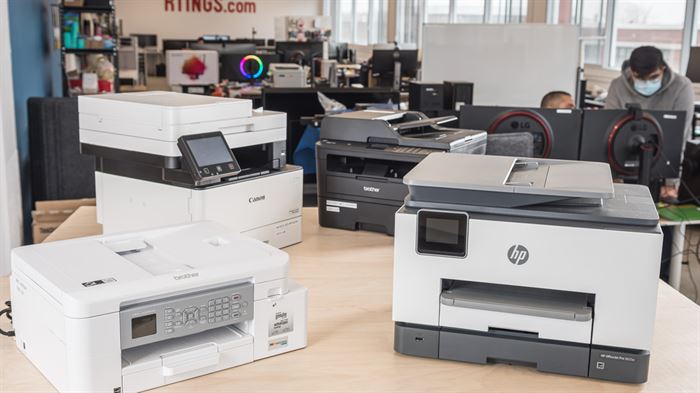
Multifunction Printers are devices that can print, scan, copy and fax documents. They are also known as all-in-one printers because they can do the work of several devices in one.
Multifunction Printers can use either Laser or inkjet technology depending on their model. However, they mostly use laser technology. Multifunction Printers are a great choice for small businesses or offices because they can save space and money by buying different devices.
Let’s have a look at some pros and cons of it.
Advantages
- The first advantage of MFPs is that they are more compact than using different devices for print, scanning, copying, and faxing. They take up less space on your desk or in your office.
- Multifunction Printers are also more efficient than traditional printers. They can print, scan, and copy documents faster than traditional printers.
- They are also more affordable than buying a different printer, scanner, copier, and fax. As MFPs often cost less than the price of three separate devices.
While this may seem like an ideal solution for a small office or home office, there are several disadvantages to using Multifunction Printers too. You should be considered these before investing in one.
Disadvantages
- The first disadvantage of Multifunction Printers is their price. MFPs are often more expensive than standard printers,
- They have a high maintenance cost. For example, MFPs often have a higher cost per page for printing, and the ink cartridges can be more expensive than those for standard printers.
- Another disadvantage of Multifunction Printers is their size. They are often larger than standard printers, and they can take up more space on a desk or shelf.
- Lastly, they can also be slow. In fact, many MFPs are slower than standard printers when it comes to printing and scanning.
Now that we know everything about different printer types for business. So, it’s time to look at how do I choose a printer for a small business?
How To Choose A Printer For Small Business
In this section, I‘ll be covering things to consider before buying a printer for your business.
However, for better understanding, I am dividing this section into two parts. In part one I’ll talk about the basic considerations. In the other part, I’ll be describing the technical printer features you should consider.
What Are The Things You Need To Consider When Purchasing A Printer For Your Business?
When purchasing a printer for your business, there are a few things you need to consider. They are
1. Type Of Printer
The most important factor is what type of printer you need. As we have discussed There are three types of printers and their pros & cons. So, try to choose one of them first according to your needs and budget.
2. Price
The second thing you need to consider is the price. You don’t want to spend too much on a printer that you won’t be using all the time.
3. Maintenance Cost
You also need to consider the maintenance cost. As printer components and inks are pretty expensive.
If you choose a laser printer then the toners are more expensive but they are long-lasting. On the other hand, an inkjet printer ink is cheaper than a laser but they are messy and do not last long.
However, Laser printer components are more expensive. Though they last long without any issue. But they might need more maintenance costs.
4. Size
The fourth thing you need to consider is the size. Before purchasing a printer, first make sure where you want to put it. Then choose a printer according to that size. Otherwise, you might end up with a printer that does not fit in your space.
5. Warranty
Finally, you need to consider the warranty. Most printers come with a one-year warranty, but some come with a longer warranty. Make sure you read the warranty papers and try to buy one with a longer warranty and support.
Now, let’s have a look at the technical part.
What Features Should You Look For In A Printer?
When you’re looking for a printer for your small business, there are a few key features you should look for. They are
- Reliability: The most important thing is how can the printer handle a high volume of printing. Because a reliable printer can produce quality high-volume prints without any issue.
- Print Speed: Printer speed is measured in pages per minute (ppm). Most printers today have a print speed of around 20. You should get a printer below 20 ppm. Because printers that can print faster will save you time and money in the long run.
- Print Quality: The next feature to consider is printer quality. Printers that produce high-quality prints will be less likely to require reprinting.
- Print Capacity: You should also consider how many pages can the printer print at once. Because if it can not print according to your need then there is no point in keeping one.
- Connectivity: Lastly, you should consider how you will connect it. Is it via wifi or wired? Then choose accordingly.
This is how to choose a printer for small business. At this time let’s have a look at some of the frequently asked questions.
FAQs
1. What Type Of Printers Is Most Common In Business Nowadays?
Laser printers are the most common type of printers in business nowadays. They are fast, efficient, and can handle a high volume of prints. They also produce high-quality prints that are perfect for presentations or important documents.
2. Is Inkjet Or Laser Better For Small Businesses?
Ultimately, which type of printer is better to purchase depends on the specific needs of the small business owner. If the color print quality is important then a laser printer may be a better choice.
On the other hand, inkjet printers are typically cheaper to purchase than laser printers, and they tend to have higher black and white print quality. However, inkjet printers can also be more expensive to operate, as they use more ink than laser printers.
Laser printers are typically more expensive to purchase than inkjet printers, but they are cheaper to operate, as they use less ink. Additionally, laser printers typically have a longer lifespan than inkjet printers.
3. Is Laser Toner Cheaper Than Ink?
No, laser toner is not cheaper than ink. However, the answer to this question is a little more complicated than a simple yes or no. It depends on the type of printer you have, the brand of toner or ink cartridge, and how often you plan to replace the cartridge.
Laser printers use toner, which is a fine powder that is electrically charged. On the other hand, inkjet printers use liquid ink, which is sprayed onto the paper.
Toner is usually more expensive than ink, but it lasts longer. Inkjet printers usually require more frequent cartridge replacements, but the cost of inkjet cartridges is usually lower than the cost of laser toner cartridges. Moreover, laser toner uses less ink. This is because laser toner is more concentrated than ink. As a result, a laser printer typically uses less toner than an inkjet printer uses ink. So, toner becomes a cheaper option.
Final words
By now you might have got a clear idea about how to choose a printer for small business. We tried to explain as simply as possible so that you can easily choose a printer for your business. Do let us know in the comments if you have any more questions.
Lastly, printers come in all shapes and sizes, and each one has its own set of pros and cons. So, it’s important to do your research and find the printer that’s best suited for your needs.
That’s it for now. Have a great day!
